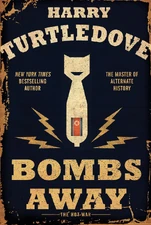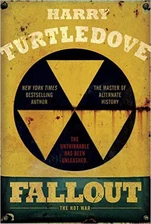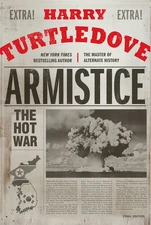
The North American F-82 Twin Mustang was the last American piston-engine fighter ordered into production by the United States Air Force. Based on the P-51 Mustang, the F-82 was originally designed as a long-range escort fighter in World War II; however, the war ended well before the first production units were operational.
In the postwar era, Strategic Air Command used the planes as a long-range escort fighter. Radar-equipped F-82s were used extensively by the Air Defense Command as replacements for the Northrop P-61 Black Widow as all-weather day/night interceptors. During the Korean War, Japan-based F-82s were among the first USAF aircraft to operate over Korea. The first three North Korean aircraft destroyed by U.S. forces were shot down by F-82s.
F-82 Twin Mustang in The Hot War[]
The U.S. Air Force had developed the F-82 Twin Mustang as a night fighter with its own radar set to find enemy aircraft. It used the F-82s to escort B-29s on bombing raids during the Korean War. The F-82 was a twin propeller powered aircraft and so outclassed by the latest Soviet jet aircraft but managed to still be effective. When the U.S. decided to use atomic bombs on Red Chinese supply lines, the F-82s escorted the bombers deep into Chinese territory and kept the MiG-9 second-string defenders away so several Chinese cities were destroyed.[1]
The atomic bombs did not end the war so the Twin Mustangs continued to fly escort missions trying to defend the B-29s. During a particularly large bombing raid on Pyongyang, with conventional explosive bombs, the Mustangs fought a hard fight against defending La-11s. The La-11s pressed hard enough to force the B-29s to drop their bombs early and then head back to their base. However, other aircraft attacked the base forcing the bombers to divert to Japan.[2]
References[]
- ↑ Bombs Away, pgs. 55-56, HC.
- ↑ Ibid., pgs. 286-289.
| |||||||||||||||||||||


